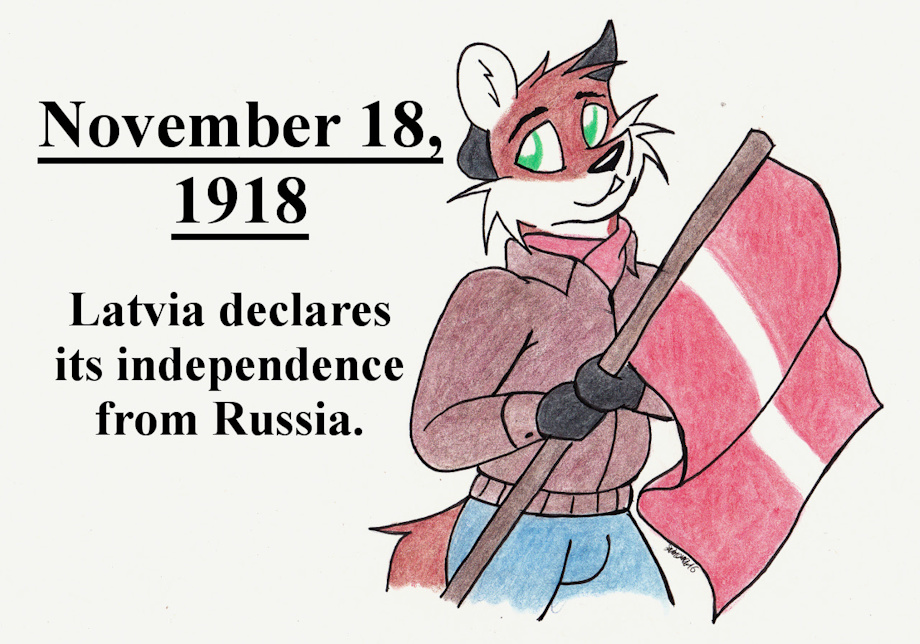On November 18, 1918, the People's Council of Latvia declares Latvia independence from Russia. Initially seeking autonomy, Latvia saw an opportunity in the post-First World War environment and the Russian Revolution left a power vacuum which provided the Latvian nation with an opportunity to gain full independence. With the declaration of independence, Kārlis Ulmanis was appointed head of the provisional government; however, this government did not go unchallenged. Two opposing factions, one backed by the Soviets and the other by Baltic Germans, also vied for control over Latvia. The independent Latvians, allied with Estonia, Lithuania, and Poland, eventually defeated their opposition and Latvian independence was made official and the war ended with signing of the Latvian-Soviet Peace Treaty, also known as the Treaty of Riga, in 1920.
By the end of World War II, Latvia would lose its independence at the hands of the Soviet Union and remain part of the Warsaw Pact until the final years of the Soviet Union. Following the Soviet Declaration on the Restoration of Independence of the Republic of Latvia, which viewed the Soviet annexation of Latvia at the end of World War II as an illegal act and that Latvian independence should be restored, a growing pro-independence movement with Latvia, and the failed coup attempt in the USSR, Latvia regained its independence August 21, 1991. Latvia has since joined both the European Union and the North Atlantic Treaty Organization (NATO).
Keywords
male
1,226,547,
fox
253,570,
vulpine
37,297,
flag
1,901,
this day in history
248,
tdih
244,
latvia
9,
november 18
1,
latvian independence
1
Details
Published:
8 years, 9 months ago
19 Nov 2016 01:57 CET
Initial: 28c3fa1a4db4aa9a20fab9c11ce8925a
Full Size: f7586e3cb3697da4b1c65683f3be0835
Large: af4f2d6e2fa26a92cf6344611bb23845
Small: 32f31925e7ab3222f8a3fe31550ce762
Stats
24 views
4 favorites
1 comment
